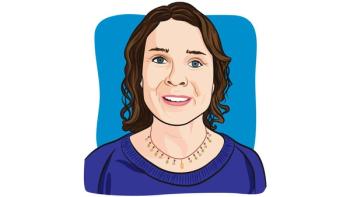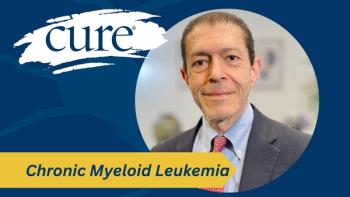
How Quitting Smoking After a Cancer Diagnosis Can Boost Survival
Key Takeaways
- Smoking is linked to 20% of cancer diagnoses, with 47% of cancer patients being former or current smokers.
- Quitting smoking at cancer diagnosis can improve treatment outcomes, reduce complications, and lower recurrence risk.
Dr. Daniel J. Boffa discusses the link between smoking cessation and increase in survival for people who are active smokers and diagnosed with cancer.
Although one in five cancer diagnoses are linked to smoking, approximately 12% of individuals in the United States are active smokers, according to Yale Cancer Center-led research, leading investigators to evaluate how prevalent smoking is in individuals diagnosed with cancer versus the larger population.
These findings, which were published in JAMA Oncology, showed that 47% of patients diagnosed with cancer in 2023 were former or current smokers compared with 12% of the general United States population. Moreover, 15% of individuals were active smokers at diagnosis, highlighting the importance of quitting the habit, especially after being diagnosed with cancer.
In an interview with CURE, Dr. Daniel J. Boffa sat down to discuss the research and its findings, the importance of smoking cessation in people who have been diagnosed with cancer, as well as what resources are available for to aid this population.
Boffa is a professor of Surgery (Thoracic); division chief of Thoracic Surgery; and clinical director at the Center for Thoracic Cancers, at Yale School of Medicine, Yale Cancer Center, located in New Haven, Connecticut.
CURE: What was the rationale for conducting this research?
Boffa: The first reason we conducted this study was that we were looking at hospitals accredited by the Commission on Cancer. This organization assesses the quality of cancer care at hospitals, and about 70% of newly diagnosed cancer patients receive care at a Commission on Cancer-accredited hospital. They work somewhat behind the scenes to ensure that the best possible care is being delivered.
So, we wanted to look at these hospitals to first and foremost see if people were having conversations about smoking. We were very encouraged to find that about 97% of the time, the medical records at Commission on Cancer-accredited hospitals contained documentation of smoking status, and that's really important.
Whether you've smoked or not can influence how the cancer behaves and what the best treatment is for you. Therefore, it's a crucial conversation for patients to have with their doctors. It was very encouraging, at least within that subset of hospitals, that this conversation was happening.
We also wanted to examine the relationship between tobacco smoking and cancer, and this reinforced the previously established understanding of a strong link between tobacco smoking and cancer.
What were some of the research methods that were utilized during this investigation? What did you find when conducting this research?
This study utilized the National Cancer Database, one of the largest cancer databases globally. We examined the information stored within this database to analyze a new variable that was recently added for patients diagnosed in 2023: whether they were current smokers, former smokers, or lifelong nonsmokers.
This information is extracted from medical records by professional data specialists working for each hospital. We analyzed the database to determine the results, and that's where we found that almost half the patients in the National Cancer Database had at some point been or continue to be tobacco smokers.
What is your main message for people based on this new analysis of smoking and cancer diagnosis?
I think the most actionable finding was that about 15% of people were actively smoking at the time of their diagnosis, and that presents a real opportunity to make a difference, because quitting at the time of a cancer diagnosis can significantly help improve outcomes. There truly is no point in time when quitting smoking is not beneficial for patients.
It's understandable that it's hard when you're diagnosed with cancer — it's a very stressful period, and that can make it even more difficult to quit a long-standing habit. However, the benefits are substantial. Treatments are associated with fewer complications when you quit smoking, and they can work more effectively. The behavior of the cancer itself can improve, and there's a lower chance of the cancer recurring.
There are tremendous benefits to quitting, even if you've already been diagnosed with cancer.
Can you expand on how smoking-related cancers may differ biologically or genetically from those who have never smoked?
The cancers associated with smoking tend to have different patterns of changes in their DNA. For example, in lung cancer, we see a number of mutations or DNA changes that we associate with individuals who have never smoked, and a different set of changes in people who have smoked.
The treatments for these can be very different. Sometimes we have treatments that really target these genetic vulnerabilities in never smokers, whereas immunotherapy, which allows patients to use their own immune systems to fight the cancers, actually works better in many cancers in patients who have a smoking history because of the genetic changes associated with smoking.
What kind of support can patients expect from their cancer care team when trying to quit smoking?
The good news is that there is a lot of help available. There are quit lines, and most hospitals have teams prepared to help people quit — their smoking cessation teams. The first step is to have that conversation and then to realize that there are tremendous benefits, even after a cancer diagnosis.
There are different types of therapy, different types of medication, and different levels of support groups that can help people make this change, which, while difficult, offers returns that are as significant and beneficial as some of our most innovative cancer treatments.
How may this new smoking data guide future improvements in cancer care, especially in regions with high rates of active smoking?
I think this illustrates that the cancer landscape in the United States is not uniform, and there are differences in behaviors of people in different parts of the country, as well as differences in cancer prevalence across the country. Active smoking is more common in several regions, such as the South. Resources can be directed to hospitals in these areas to help strengthen their smoking cessation efforts.
Additionally, there are higher rates of active smoking across different cancer types. For instance, lung cancer has one of the higher rates, whereas thyroid cancer would have a significantly lower rate. Therefore, I think that hospitals treating a greater proportion of lung cancer patients would benefit from additional support efforts, while hospitals in different parts of the country, like the South, where active smoking rates are higher, could benefit from additional resources.
What are you hoping that patients will take away from this conversation today?
Smoking is an area of significant ongoing research, and cancers associated with smoking are particularly poised to benefit from some of the current research innovations. We are fortunate to have one of the best research infrastructures in the world, which provides us with many advantages in terms of early access to innovative treatments.
Just as there are all these exciting developments across medicine, there is still so much to be learned, and supporting our research infrastructure is critically important.
Transcript has been edited for clarity and conciseness.
For more news on cancer updates, research and education, don’t forget to





